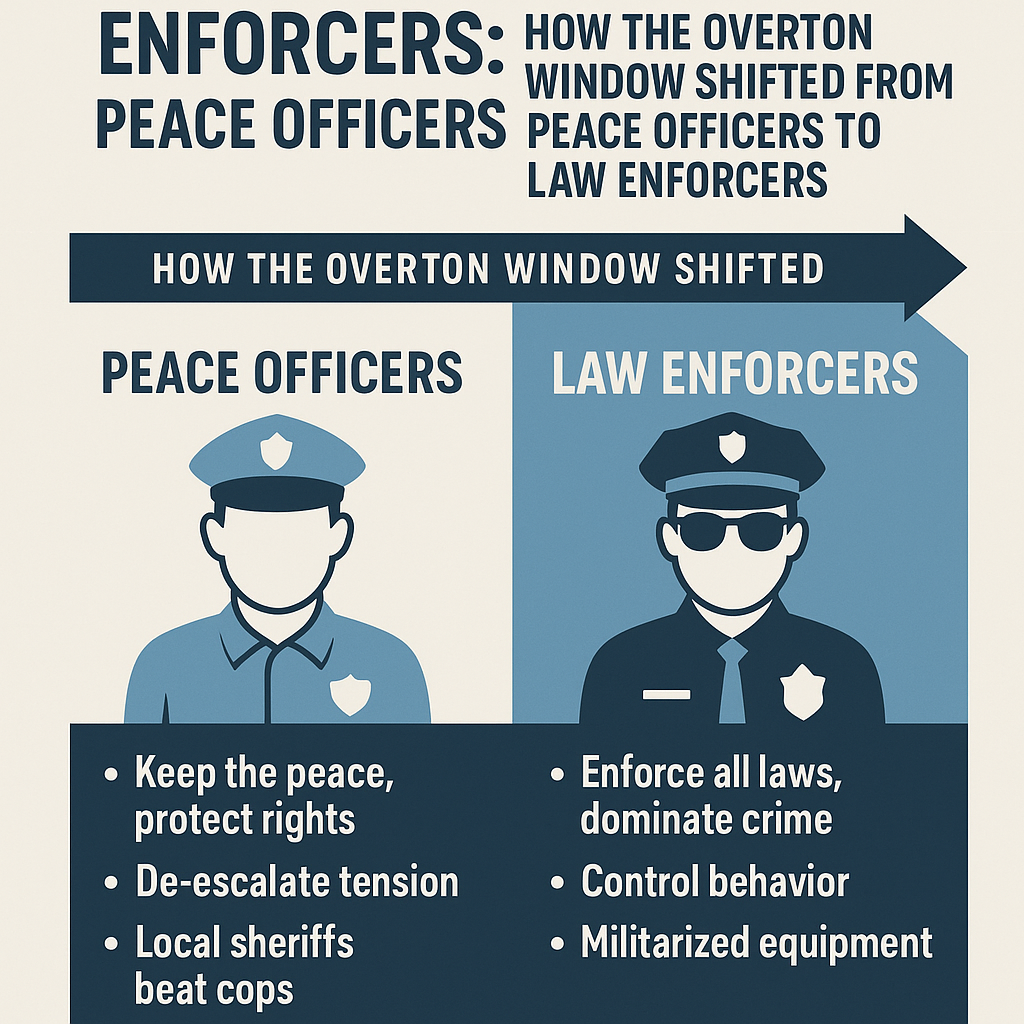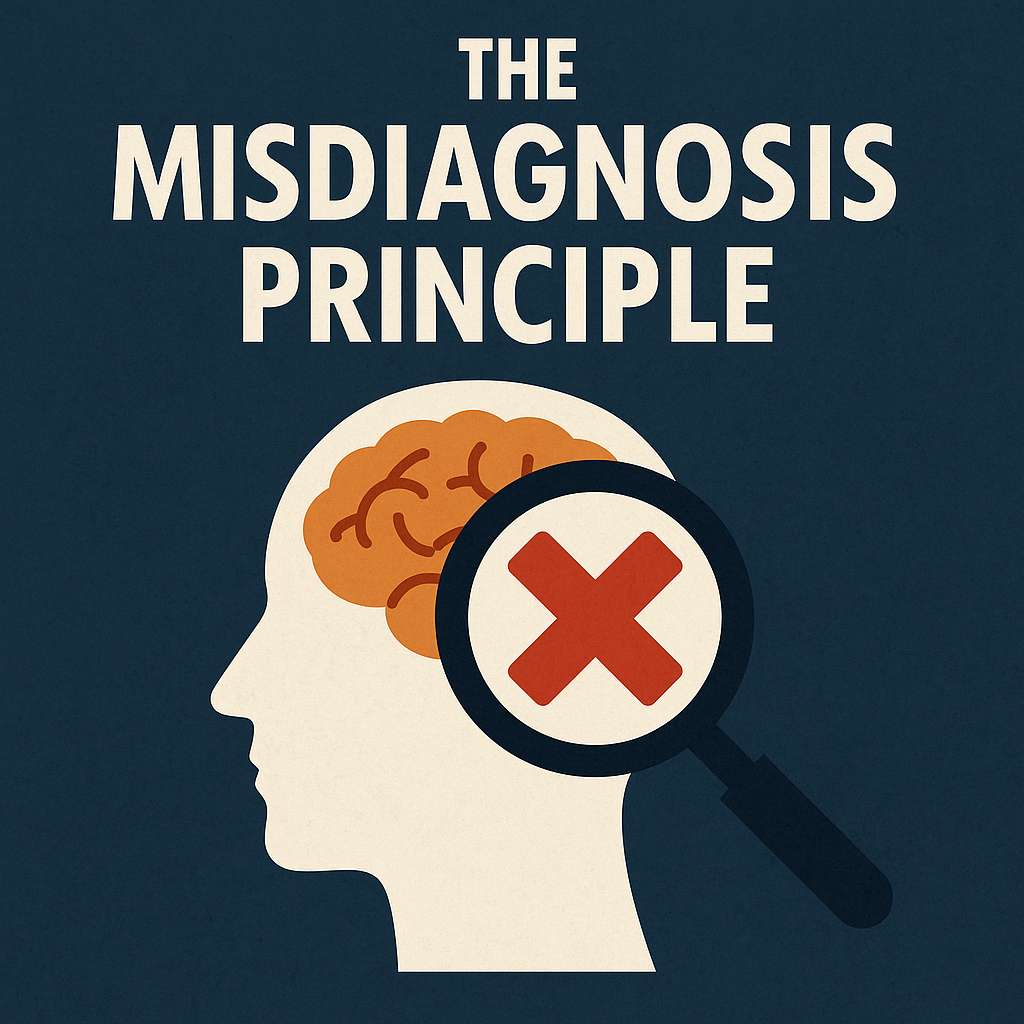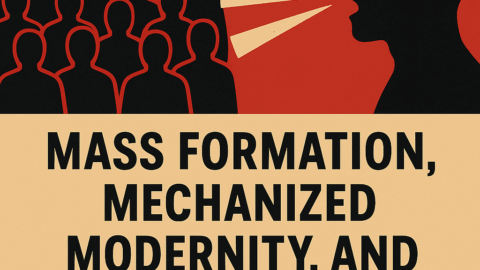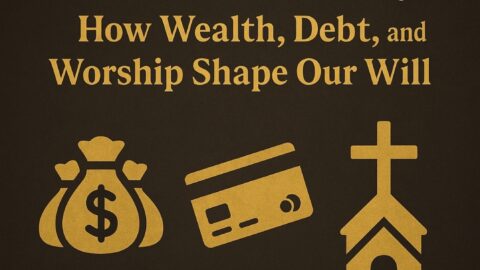The shift from “peace officer” to “law enforcement officer” is not just a change in vocabulary — it reflects a massive Overton Window shift in how policing is understood, practiced, and accepted by the public. This evolution has altered how society views authority, conflict, rights, and state power.
Let’s break it down:
THEN: Peace Officers (1800s to mid-1900s)
Overton Window Position:
Normative ideal — Keep the peace, protect rights, de-escalate tension
Characteristics:
- Local sheriffs accountable to the community
- Viewed as guardians, not soldiers
- Emphasis on mediation, neighborly familiarity
- Community-oriented presence (beat cops, walk-the-block models)
- Limited gear, minimal militarization
- Authority derived from trust and moral legitimacy, not fear
Founding ideal: Government’s job is to secure rights, not coerce obedience.
NOW: Law Enforcement Officers (1970s – Present)
Overton Window Position:
Normalized and expected — Enforce all laws, dominate crime, control behavior
Characteristics:
- Militarized equipment and training (SWAT, MRAPs, drones)
- Federal and DHS funding tied to surveillance and force readiness
- “Compliance first, questions later” culture
- Escalation often prioritized over de-escalation
- Public trained to obey commands rather than dialogue
- “Protect and Serve” motto replaced with “Enforce and Control”
Cultural shift: Officer as enforcer of state power, not protector of individual rights.
How the Overton Window Moved
| Era | Norm | Focus of Policing | Public Expectation |
|---|---|---|---|
| 1800s–1940s (Peace Officer) | ✅ | Protecting life and liberty | Friendly, local, trusted |
| 1950s–1970s (Transitional) | ⚠️ | Policing rising crime | Tough but fair |
| 1980s–2000s (War on Drugs) | 🔒 | Enforce laws at all costs | Crackdown expected |
| 2010s–Present (Militarized) | 🚨 | Maintain order via domination | Submission, surveillance |
Catalysts for the Shift:
- War on Drugs: Created a “criminal class” out of citizens.
- War on Terror: Brought battlefield tools to city streets.
- Federal grants: Incentivized gear, SWAT raids, asset forfeiture.
- Broken windows policing: Equated poverty with threat.
- Media framing: Glorified cops as warriors in a hostile world.
Why It Matters:
- Rights-based policing (peace officer) = servant of the people
- Force-based policing (law enforcer) = agent of the state
The modern law enforcement officer is no longer a local steward of peace, but a bureaucratic executor of centralized policies — often unmoored from community consent or constitutional restraint.
Reframing the Window: What Needs to Shift Back
| From | To |
|---|---|
| Compliance-first | Consent and conversation |
| War mindset | Peacekeeping mindset |
| Enforce all laws blindly | Prioritize justice and liberty |
| Federal militarization | Local de-escalation focus |
| Obedience through fear | Respect through legitimacy |
Conclusion:
The Overton Window moved from liberty-centered peacekeeping to coercive law enforcement. This shift was gradual but intentional, fueled by crisis narratives, federal incentives, and media reinforcement.
To reverse it, the people must reclaim the moral standard of governance — that the state exists to secure rights, not enforce submission.






